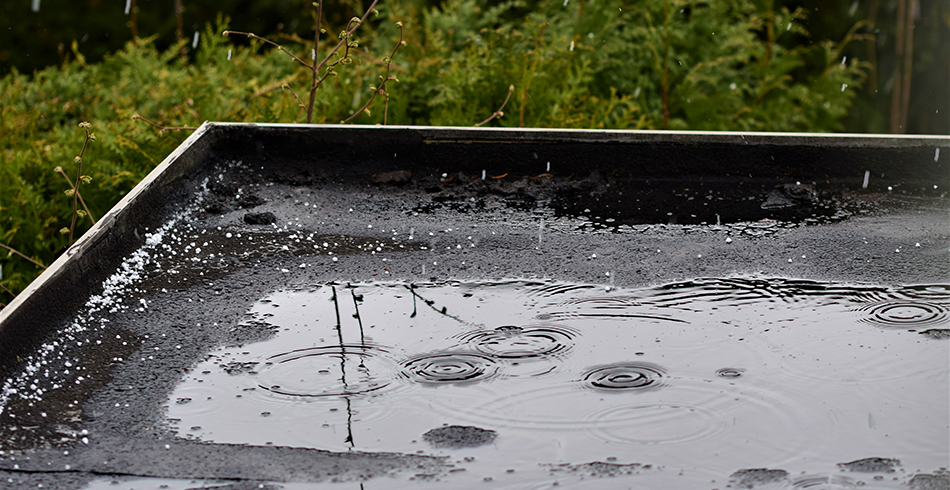Ponding or slow-moving water on flat roofs, especially in the springtime, provide the perfect conditions for mosquitoes to breed, grow and thrive.
Flat roofs, in general, should never be completely flat. That sounds like a paradox, but it is a very important detail. They provide the appearance of flatness but should have minimum falls of 1:80 to drain rainwater effectively from the roof. For example, the lowest point of an 80m roof would be 1m beneath its highest point.
BS 6229:2018 states that “All flat roof surfaces (including gutter beds) should be designed with a fall of 1:40 to ensure finished drainage falls of 1:80 are achieved. This should take account of construction tolerances, permitted deviations and deflection under load, and, unless justified by more detailed structural analysis, to account for deflections/settlement.”
Inadequate drainage can be caused by many factors, including deck deflections, incorrect design/installation, poor maintenance, and blocked outlets.
Large flat roofs, for instance on school buildings, catch a lot of water during a rainstorm. If the water is not effectively drained, not only will there be potentially tons of extra weight on the structure, but the water will also provide a nursery for mosquito larvae

Conditions for mosquito propagation are not limited to stagnant water, fresh rainwater can become a breeding ground. The Government website under the Public Health section has an article that refers to the Culiseta Annulata mosquito, one of the most common in the British Isles “This mosquito breeds in a wide variety of different sites in natural and artificial waters. These can be in sunlit areas or deeply shaded. The water in which the eggs, larvae and pupae are to be found can be fresh or brackish, clean or polluted…”
So how do we eliminate standing water and prevent swarms of mosquitoes breeding on your roof?
The introduction of a tapered insulation scheme is possibly the most effective way of ensuring all water is drained properly. Tapered insulation schemes are tailored to each building and essentially the insulation is designed and cut to create adequate falls in such a way as to guide the water to the outlets and gutters.
An alternative to this is to create the falls in the deck. This can be done with a cement sand screed on a concrete deck or timber firrings.
There is also no substitute for regular maintenance. Installed correctly, most high-performance flat roof membranes will not be affected by ponding water, but other things can be affected such as reduction in thermal efficiency.
For more advice on any aspect of flat roofing, or to discuss your project requirements, get in touch by calling us on 01403 261844, email roof@builtwithbailey.com or complete a contact form on the website.




